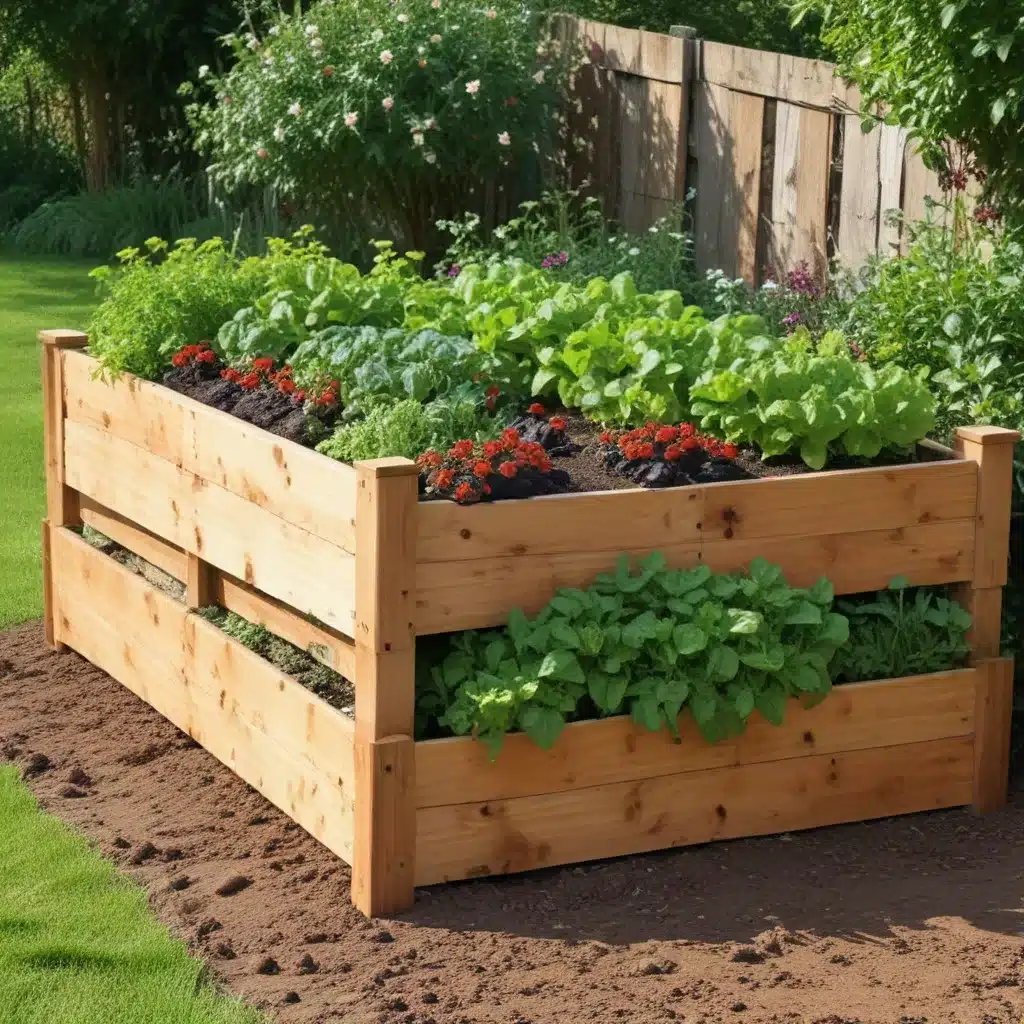
Gardening in raised beds offers countless benefits to both new and experienced growers. Raised beds allow you to create the ideal growing conditions for your plants, resulting in healthier crops and higher yields. Whether you’re looking to maximize your small urban plot or build out a more expansive country garden, raised beds are a practical solution that can elevate your gardening success.
Benefits of Raised Bed Gardening
Improved Soil Quality: Raised beds are typically filled with a custom soil blend, often incorporating nutrient-rich compost and other organic matter. This ensures your plants have access to optimal nutrients and drainage, leading to more vibrant growth. The contained nature of raised beds also prevents soil compaction, keeping it light and airy for robust root development.
Enhanced Drainage and Aeration: With raised beds, you can control the soil depth and composition to ensure excellent drainage and aeration. This is especially beneficial in areas with heavy, clay-based soils or poor natural drainage. The elevated beds allow water to flow away from plant roots, preventing waterlogging and root rot.
Easier Maintenance: Raised beds make gardening more accessible, especially for those with physical limitations. The elevated planting area reduces the need for bending and kneeling, and the defined boundaries help keep weeds at bay. Raised beds also warm up faster in spring, allowing you to get a head start on planting.
Choosing the Right Location
When selecting a site for your raised beds, consider the following factors:
Sun Exposure Considerations: Most vegetables and herbs require at least 6-8 hours of direct sunlight per day. Choose a location that receives ample sun exposure throughout the growing season.
Proximity to Water Source: Position your raised beds near a water source, such as an outdoor spigot or rain barrel, to simplify the watering process.
Accessibility for Gardeners: Plan the layout of your raised beds with ease of access in mind. Leave enough space between beds for comfortable movement and wheelbarrow or tool navigation.
Raised Bed Construction
There are various types of raised beds to choose from, including wooden frames, stone or brick walls, and even repurposed containers. When determining the size and materials, consider the following:
Building Materials and Dimensions: Cedar, redwood, and pressure-treated pine are popular choices for their durability and resistance to rot. Aim for beds that are 12-24 inches deep and 3-4 feet wide to accommodate most vegetables and herbs.
Soil Preparation: Before filling your raised beds, amend the soil with high-quality compost to create a nutrient-rich, well-draining growing medium. You can also incorporate other organic amendments, such as worm castings or aged manure, to further enrich the soil.
Planting and Crop Selection
One of the benefits of raised bed gardening is the ability to practice companion planting, where you strategically place complementary crops side by side. This can help deter pests, maximize available space, and create a visually appealing design.
Maximizing Vertical Space: Utilize trellises, cages, or stakes to support climbing or vining crops, such as tomatoes, cucumbers, and pole beans. This allows you to grow more in a limited footprint.
Suitable Crops for Raised Beds: Leafy greens, root vegetables, brassicas (such as broccoli and kale), and many herbs thrive in the controlled environment of raised beds. Avoid crops with extensive root systems, like potatoes, unless you have deep enough beds.
Irrigation and Watering Techniques
Efficient watering is crucial for raised bed gardening, as the smaller soil volume can dry out more quickly than in-ground gardens.
Drip Irrigation Systems: Install a drip irrigation system to deliver water directly to the root zone, reducing water waste and promoting deep root growth.
Efficient Watering Schedules: Monitor soil moisture and water your raised beds thoroughly, but avoid overwatering. Consistent, deep watering is more beneficial than frequent light sprinklings.
Pest and Weed Management
Raised beds offer several advantages when it comes to managing pests and weeds, but vigilance is still required.
Organic Pest Control Methods: Use row covers, companion planting, and hand-picking to deter insect pests. Introduce beneficial insects, such as ladybugs and lacewings, to aid in natural pest control.
Preventive Weed Suppression: Cover exposed soil with a thick layer of mulch, such as shredded leaves or wood chips, to inhibit weed growth. Practice crop rotation to disrupt weed life cycles.
Nutrient Management
Maintaining nutrient-rich soil is essential for the long-term health and productivity of your raised bed garden.
Organic Soil Amendments: Regularly incorporate compost, aged manure, or vermicompost to replenish essential nutrients and improve soil structure.
Fertilizer Application Techniques: Use organic fertilizers or slow-release amendments to provide a steady supply of nutrients throughout the growing season. Avoid over-fertilizing, which can lead to excessive foliage growth at the expense of fruit or vegetable production.
Cover Cropping and Green Manures: Sow cover crops or green manures between growing seasons to fix nitrogen, suppress weeds, and improve soil tilth.
Seasonal Considerations
Raised bed gardening requires some adjustments based on the time of year, but with proper planning, you can enjoy a bountiful harvest from spring through fall.
Spring Planting and Preparation: Get a head start on the season by planting cool-weather crops, such as lettuce, peas, and radishes, in early spring. Amend your soil with compost and replenish any depleted nutrients.
Summer Maintenance and Harvesting: Regularly water, weed, and prune your plants to encourage continuous production. Harvest crops at their peak ripeness to enjoy maximum flavor and nutrition.
Fall Cleanup and Winter Protection: As the growing season winds down, remove spent plants, add a fresh layer of mulch, and consider planting cover crops to protect your soil over the winter. In cold climates, you can extend the season by covering your raised beds with row covers or cold frames.
Embracing the many benefits of raised bed gardening can help you grow a more diverse, productive, and sustainable edible landscape. By following these practical tips, you’ll be well on your way to bountiful harvests and the joy of homegrown, nutritious produce.


